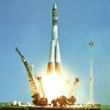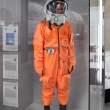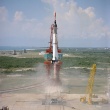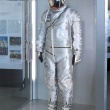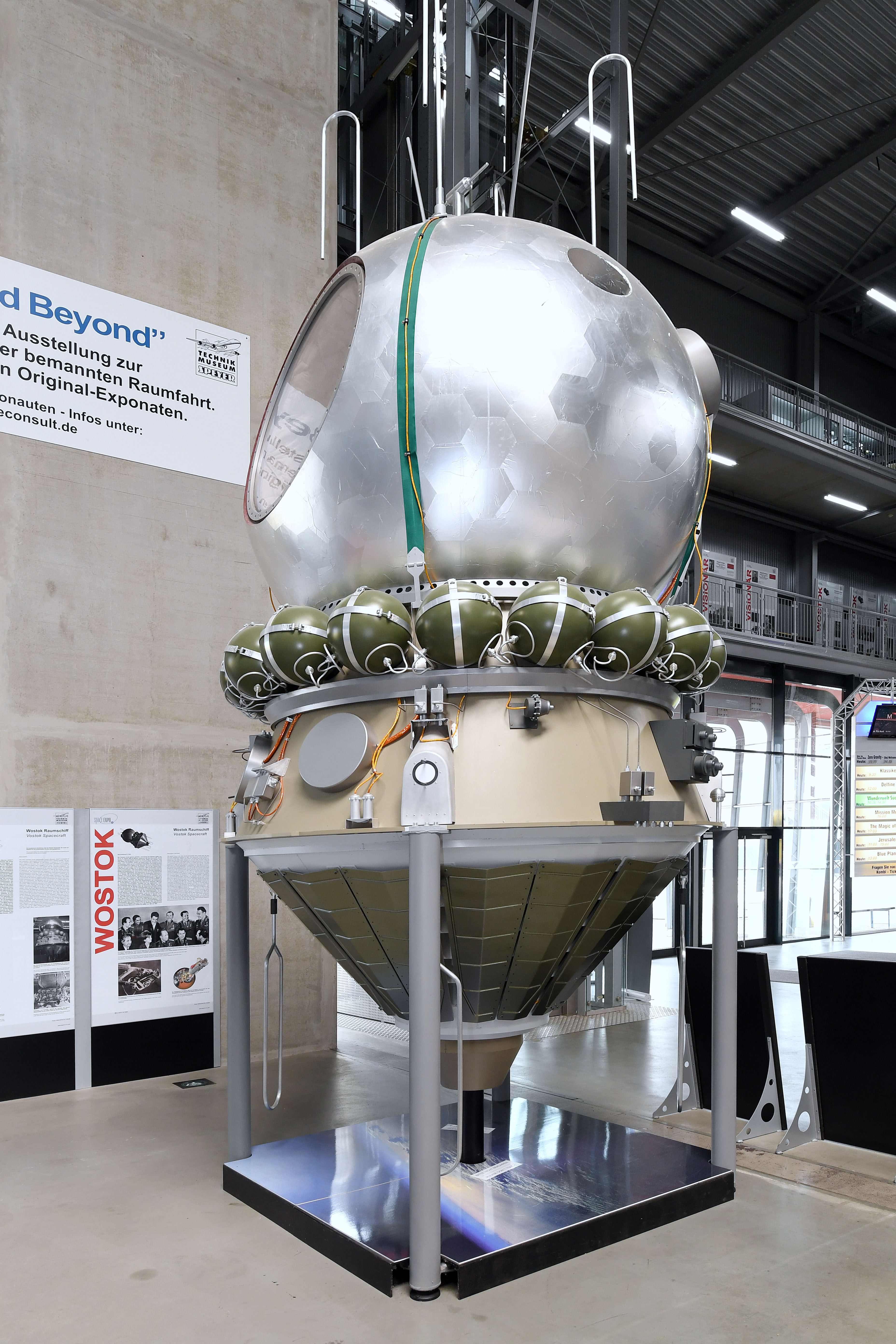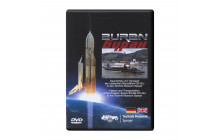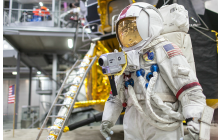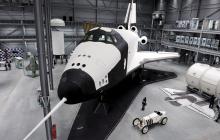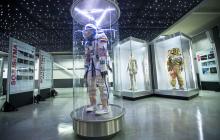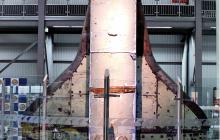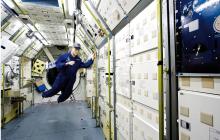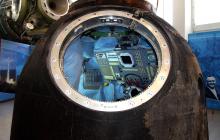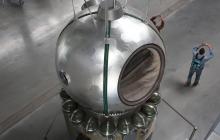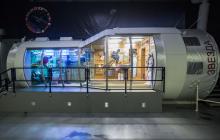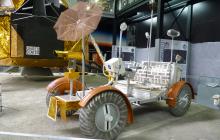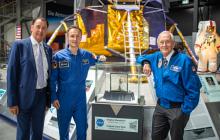A milestone in the “Space Race”: The first men in space
Baikonur, April 12th, 1961, 7:10 a.m.: Yuri Alekseyevich Gagarin mounts almost 40 metres to the top of the gigantic R-7 rocket and climbs into the capsule of the Vostok spaceship. The countdown starts. The cosmonaut, waiting in his seat, listens to music via his headphones. At 9:07 a.m., the moment has come: Five four-chamber rocket engines, perfectly aligned in their “cosmic” interaction, shoot the Vostok with Gagarin aboard into the sky. “Pojechali!” (“Off we go!”) - these are the words the cosmonaut used to kick off his journey into outer space.
During his orbital spaceflight around Earth, the first man in outer space flies across the Kamchatka Peninsula, then across Hawaii, and the Pacific Ocean west of the Chilean coast, further on across the Strait of Magellan, the Atlantic Ocean, and Africa... At 10:55 a.m., the hatch of the capsule is released, and the cosmonaut is ejected via the ejector seat. 10 minutes later, the cosmonaut lands on his home planet near the city of Engels on the Volga River. What a huge success!
With a bit of luck, to be exact, because this space mission went down all but perfect. Once Gagarin had taken his seat in the Vostok capsule and was ready to go, a display in the spaceship signalled that the hatch wasn’t locked properly. Fortunately, the ground crew led by head designer Sergey Korolyov, the “father of Soviet spaceflight”, could take care of this problem while the clock was ticking: Three technicians removed all 30 locking screws and closed the hatch a second time. That the first man in outer space could land safely back on Earth wasn’t a given either. Ten seconds after the launch of the retrorockets for re-entry, suddenly a major rotation was set off as the service module did not separate as planned from the re-entry capsule. Only 10 minutes later, when the heat from the re-etry into the Earth’s atmosphere burnt multiple cables, the capsule was set free and the cosmonaut could leave it via the ejection hatch at an altitude of 7,000 metres.
For the Soviet Union and its leaders, this was a major triumph. With Gagarin’s pioneer spaceflight, they took the lead once more in the “Space Race” between the two superpowers, after having succeeded with Sputnik four years prior.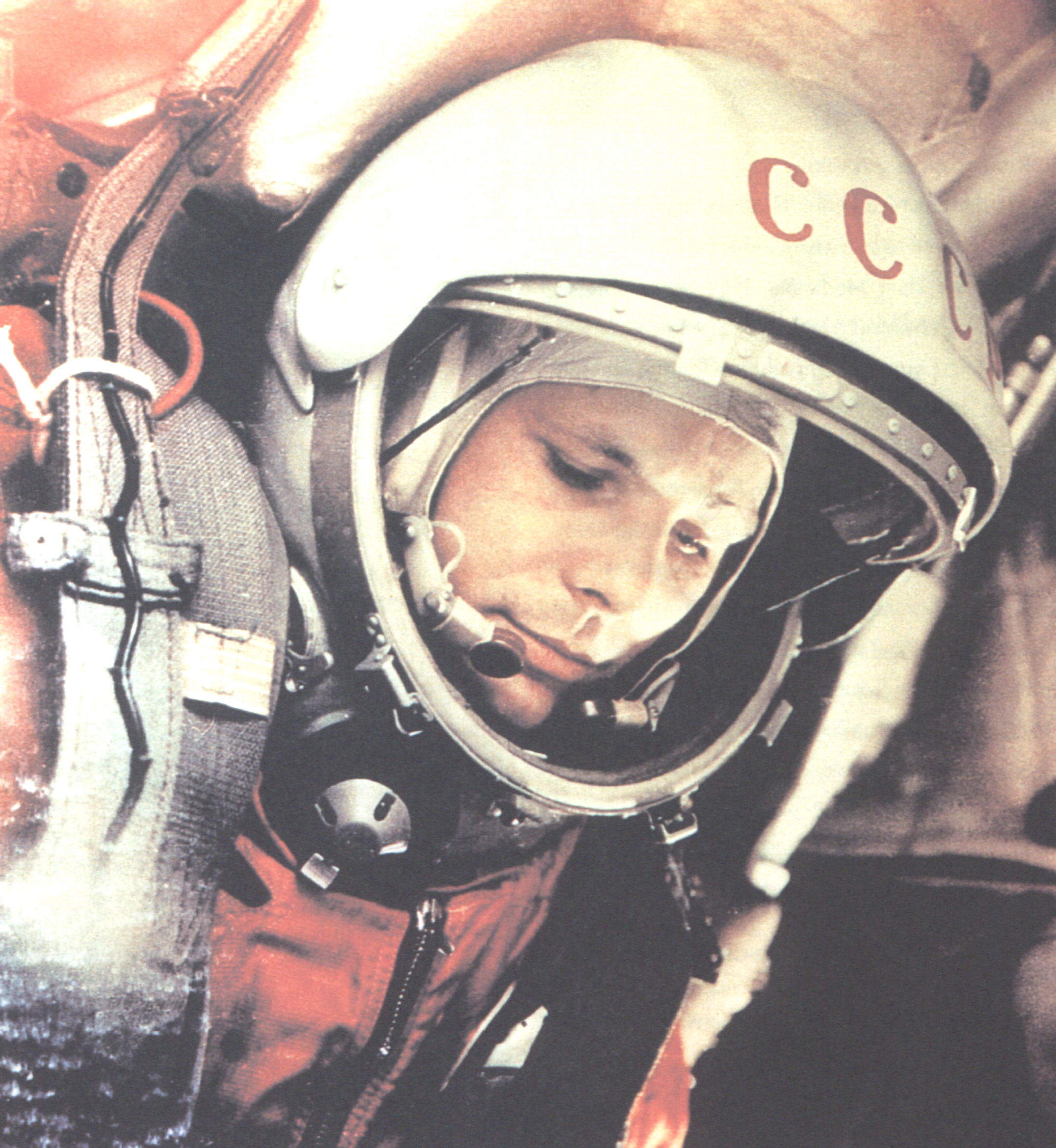
The first US-American in space
Only shortly after, rocket engineer Wernher von Braun, US spaceflight hero and Korolyovs opponent in the “Space Race”, and his team had reason to celebrate: On May 5th, 1961, only 23 days after Gagarin’s pioneer spaceflight, Alan B. Shepard was the first US-American to fly into space. Shepard mounted the Mercury spaceship Freedom 7 that sat on top of a Redstone rocket. The launch had to be postponed several times, but at 9:30 a.m., the countdown started for the 15-minute spaceflight. The astronaut was shot to 187 kilometres of altitude. Contrary to Gagarin’s spaceflight, Shepard’s Freedom 7 did not enter the orbit, but only completed a suborbital flight because the Redstone rocket did not have enough thrust to shoot the capsule into the Earth’s orbit. Shepard was weightless for about 5 minutes during his flight. The re-entry and the water landing in the Atlantic Ocean near the Bahamas went smoothly. Millions of people watched the event on television or listened to the radio with great excitement.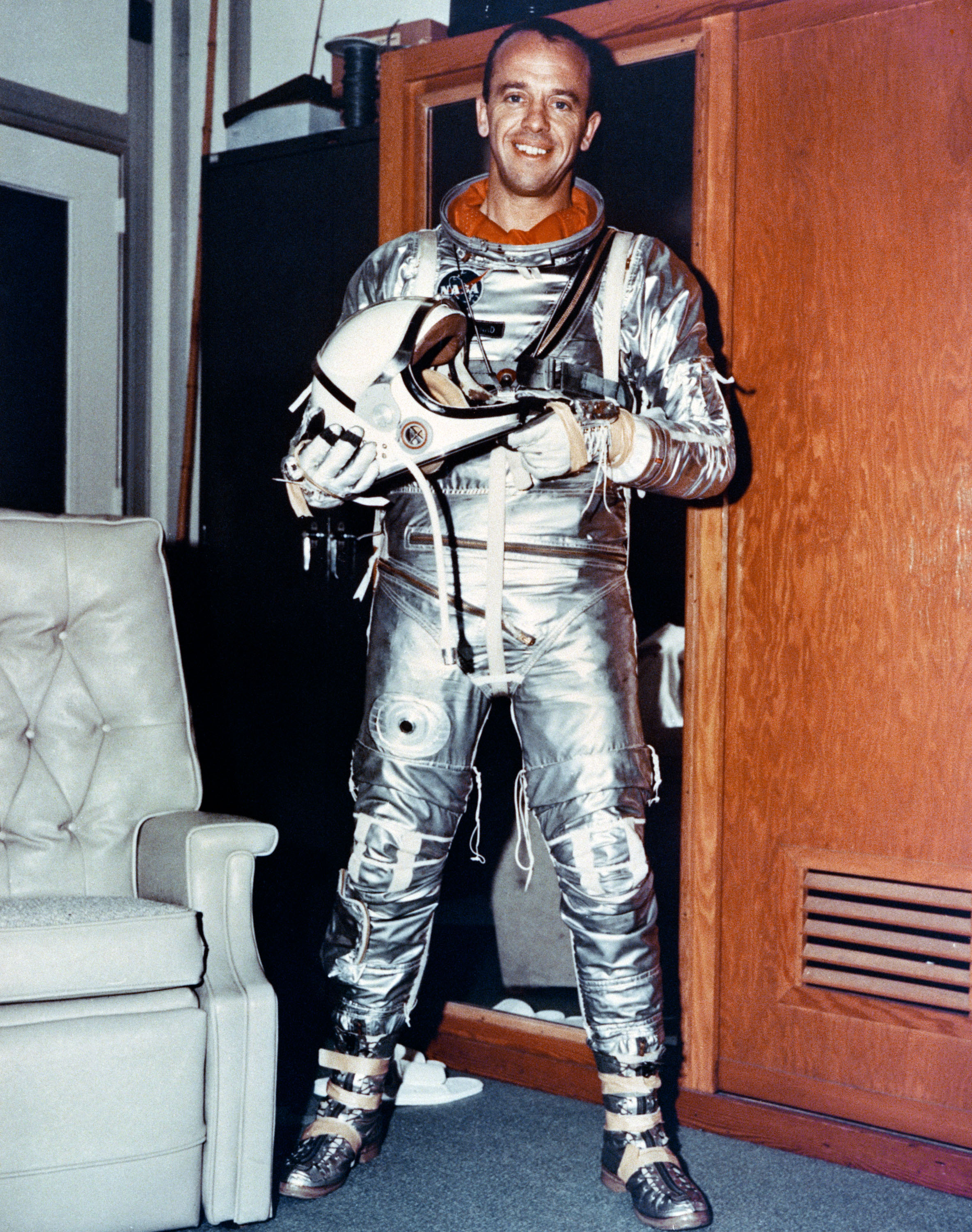
And that's how the story continued...
The US still felt challenged. President Kennedy did not content himself with the second rank in this race. He wanted to put wood behind the arrow and set up a goal-oriented, concrete plan on how to catch up with the Soviets in the “Space Race” once and for all. As for the Earth's orbit, they knew that the game was over, there was no match left to win there for the US. The next big step had to be spectacular and ambitious. Some place far away from our home planet. Wernher von Braun thought it realistic that an immediate action programme would have them land on the moon before the Soviets. On May 25th, 1961, in a legendary speech before the US Congress, Kennedy presented his big goal to safely bring a human to the Moon and back to Earth before the end of the century. Thus, a new chapter began: The “Space Race” was replaced by the “Race to the Moon”.
Exhibits at our museum:
At Technik Museum Speyer, two impressive exhibits commemorate the first people who flew into outer space 60 years ago. Europe’s biggest exhibition on crewed spaceflight “Apollo and Beyond” showcases a replica of Juri Gagarin’s orange spacesuit and a fascinating replica of his Vostok spaceship. Alan B. Shepard’s suborbital flight and the US-American Project Mercury are represented by a replica of the renowned Mercury “Silver Spacesuit”.
The stories and reports represent the opinions and perspectives of the respective authors. Please note, especially while reading articles about our events, that binding information (e.g. opening hours, admission fees and programme) is only published on the museum's official website www.technik-museum.de.
Please note that the pictures, texts and videos published here are subject to the copyright of the respective authors and / or the museum and may not be used without permission.
Keep up-to-date with new articles
We recommend to subscribe to the museum’s newsletter via e-mail. At the end of each newsletter, we inform you about new articles so that you will not miss any of them. Alternatively, you can subscribe to an RSS feed:
Subscribe to newsletter RSS-Feed (Reader required)

